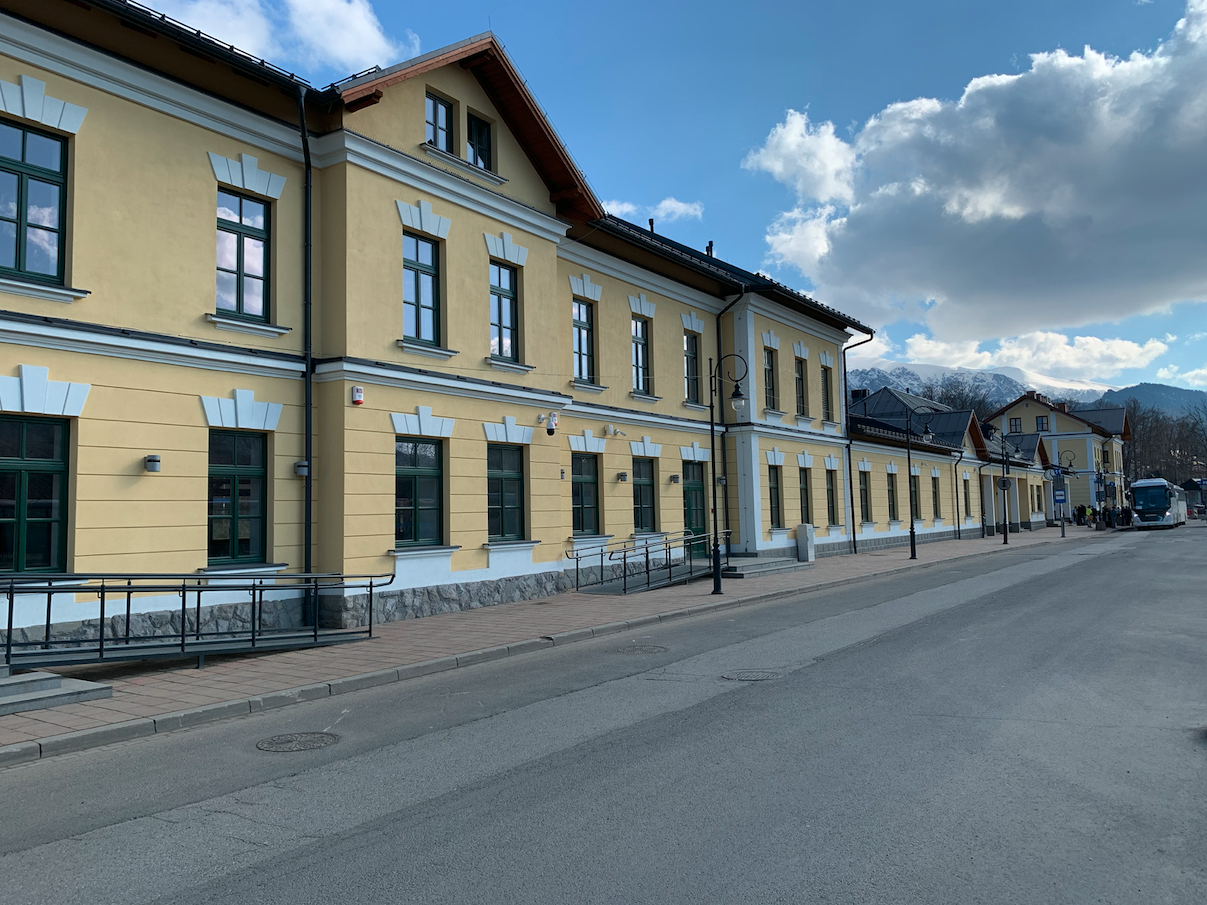Zakopane 2022-04-25
PKP Zakopane railway station.
Geographic coordinates 49.301N 19.963E. Elevation 836 m.
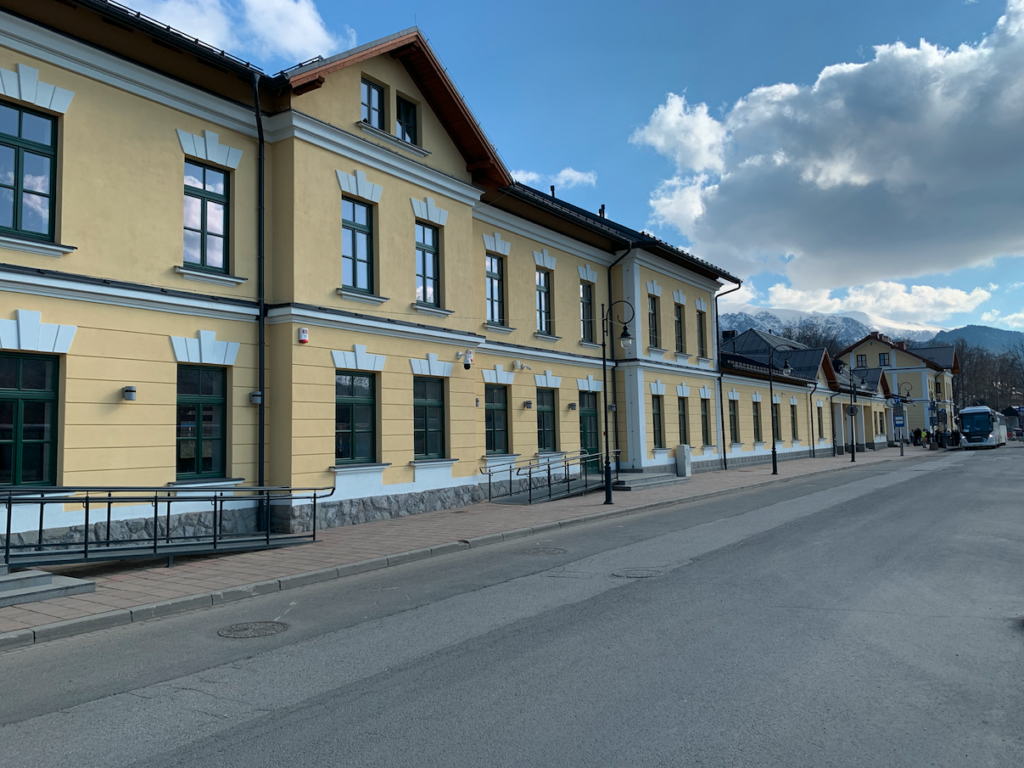
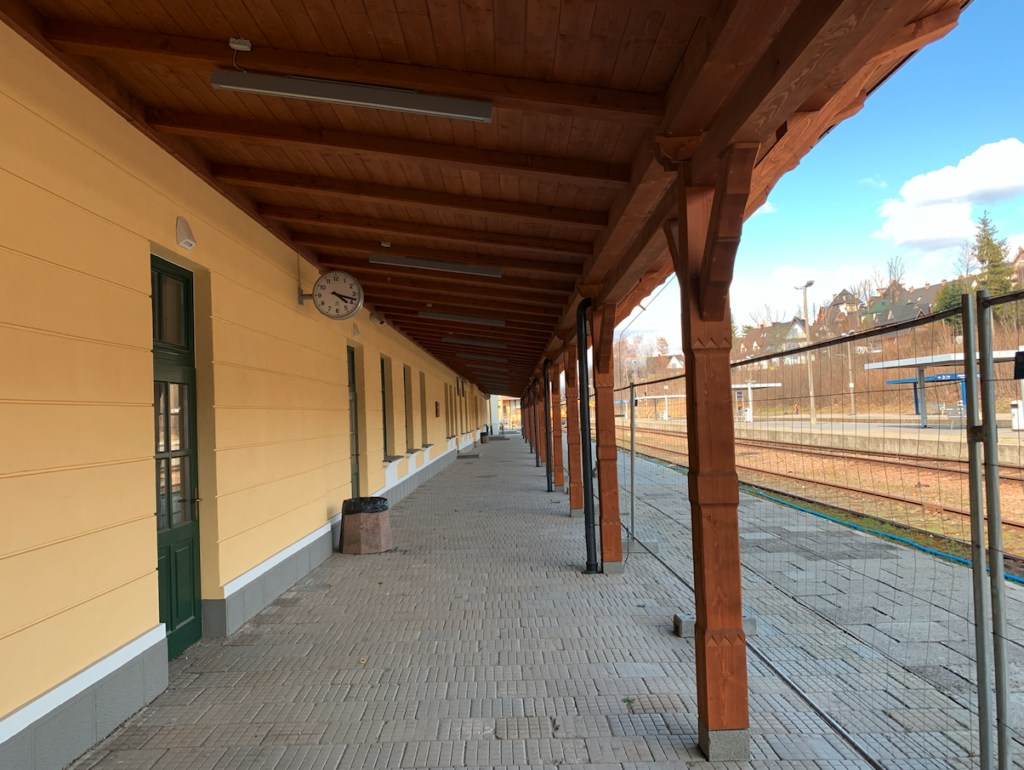
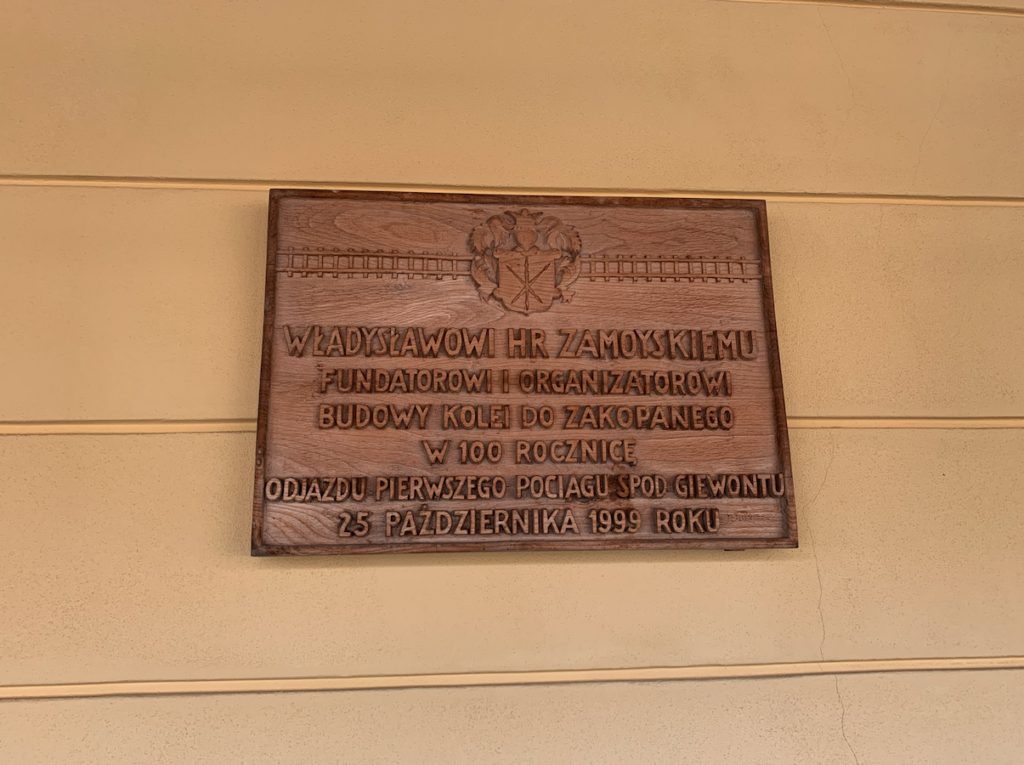
Before we discuss the PKP Zakopane railway station, we will answer the question – What is this city; Zakopane?
History of the city of Zakopane.
In the 12th and 13th centuries, the Tatra Mountains with the entire Podhale region were royal property. The Polish Tatras were managed by the starosta of Nowy Targ. The Slovak Tatras with Orava, Liptov and Spisz belonged to the Hungarian king. Zakopane was founded by the privilege of King Stefan Batory in 1578. The name Zakopane appeared in a document of King Sigismund III Vasa dated April 20, 1630. The origin of the word “Zakopane” means a clearing and originally sounded “Za Kopane”. The first inhabitants were peasants and townspeople who fled from their lords. The kings approved their right to reside. In 1670, King Michał Wiśniowiecki approved the right to operate the village and its inhabitants.
Since the land did not bring any big plans, the inhabitants were engaged in animal breeding and working in the forest. Some of the inhabitants were engaged in mining, metallurgy or guiding various people through the mountains. In the 18th century, during mining exploration, small deposits of gold, silver, copper and iron ore were discovered in the Tatras. An ironworks was opened in Kościelisko. In the second half of the 19th century, the deposits were exhausted.
According to the 1818 census, there were 340 houses in Zakopane and Kościelisko, 871 men and 934 women. In 1824, Zakopane and part of the Tatras were sold to the Hungarian Homolacs family. In 1888, the owner Pelz went bankrupt and his landed estates were put up for auction. In 1889, Zakopane and part of the Tatras were bought by Count Władysław Zamoyski, owner of the Kórnik estate in Greater Poland. He bought them at auction for 460,002 złoty and 3 cents. Zamoyski unofficially called the acquired lands “The Zakopane State”. During this time, Zakopane was significantly modernized. Waterworks, a post office, telephones, telegraphs, schools and other public buildings were built. The count’s mother founded an economic school for girls in Zakopane. The school quickly became elite. Talented village girls studied at the school for free. At that time, forest management improved. New trees were planted where the forest was cut down. The Zamoyski family brought famous doctors to Zakopane, who quickly appreciated the climatic values of Podhale. At that time, wealthy patients began to come to Zakopane to improve their health. As early as 1889, Zakopane had over 250 houses, with over 600 guest rooms. In 1886, Zakopane was officially recognized as a health resort. The first sanatoriums were established, where, among other things, tuberculosis was treated. Famous writers, poets, painters, sculptors and actors began to come to Zakopane.
Count Władysław Zamoyski was the initiator and sponsor of the construction of a railway line from Chabówka, through Nowy Targ to Zakopane. The works were completed in 1899, although the first train on the Chabówka – Nowy Targ route is said to have already passed in 1894. The first passenger train arrived in Zakopane on 25 October 1899.
After the Great World War, when Poland regained independence, Count Zamoyski left his entire estate to the Polish nation in the form of a foundation. The transferred forests became the basis for the creation of the Tatra National Park. On 18 October 1933, Zakopane received city rights. In 1997, Zakopane was visited on a pilgrimage by the Holy Pope John Paul II, who lived in Księżówka at the time, on 4-7 June 1997.
Railway line No. 99.
Railway line No. 99, connects Chabówka with Zakopane. In 1948, the line was No. 140, and in 1988, No. 135. The line is 43.785 km long. The line runs through Nowy Targ. Stations and stops: Rokiciny Podhalańskie (3.275 km), Raba Wyżna (5.621 km), Sieniawa (10.988 km), Pyzówka (15.052 km), Lasek (18.098 km), Nowy Targ (22.595 km), Szaflary (26.530 km), Biały Dunajec (33.856 km), Poronin (37.466 km).
Since the construction of the railway line was carried out during the Austrian partition, it was requested to build an additional railway line from Nowy Targ through Podczerwone to Sucha Hora in Slovakia. The line never played the role it was intended for. In 1948, the line had No. 142, and in 1988, No. 135a, and finally No. 118. The line had stations: Nowy Targ Fabryczny (2.48 km), Ludźmierz (4.40 km), Rogoźnik Podhalański (6.99 km), Czarny Dunajec (11.87 km), Podczerwone (18.01 km), Sucha Hora. The line was launched on July 1, 1904. In mid-1945, the Podczerwone – Suchá Hora section was closed, and in 1965, this section was dismantled. In 1981, passenger traffic was suspended on the Nowy Targ – Podczerwone section. In 1988, freight traffic was suspended on the Nowy Targ – Podczerwone section. In 1992, the line was dismantled. The Nowy Targ Fabryczny railway station was built for the employees of the “Podhale” shoe factory. A two-story railway station was built in the Zakopane style. In 1988, passenger trains were suspended. The railway line was dismantled in 1992.
Officially, line No. 99 was put into service in 1899. The first passenger train ran the Zakopane–Kraków route on October 25, 1899.
The line was built as a mountain, single-track line, with a minimum number of bridges and viaducts. Not a single tunnel was built on the route, which significantly reduced construction costs and construction time. Although the plan was to build a tunnel in the area of Przełęcz Sieniawska. However, such construction has its drawbacks. There are numerous railway arches and descents and ascents on the route. The track inclination sometimes exceeds 28‰. As a result, traction conditions on line No. 99 are difficult. This causes difficulties in driving trains and radically forces a reduction in their speed. Nevertheless, drivers (mechanics) cope perfectly on the route.
As a result, not every steam locomotive performed and performs well on the track. Long and heavy steam locomotives did not perform well here, contributing to the destruction of the rails. Before the Great World War, only a few types of Austrian steam locomotives could run on the line.
In the interwar period, trains were pulled by German (Prussian) TKt1 type steam locomotives. However, they were structurally unsuccessful and unreliable.
At the beginning of the 1930s, the PKP management decided to order a new locomotive from the Hipolit Cegielski Plant in Poznań, intended specifically for the Kraków – Zakopane line. At that time, a Polish OKz32 steam tank locomotive was designed, which turned out to be well-adapted to the difficult conditions of the line. As shown by trial tests, the locomotive was able to cover the Kraków – Zakopane route, with a passenger train of wagons, half an hour faster than the TKt1 type steam locomotive.
Other steam locomotives of the tank type performed well here. On the route to Zakopane, the Polish steam locomotive TKt48, built after World War II, performed well. Tank locomotives also had the advantage that their forward and reverse speeds were the same. This was important because on the Kraków – Zakopane route the train changed direction three times. In addition, there was never a locomotive turntable in Zakopane.
The OKz32 and TKt48 locomotives pulled passenger trains until 1975, i.e. until the line was electrified. Freight trains were usually pulled by Ty2 / Ty42 type locomotives.
In the 1920s, the route was covered by a TAG Kiel motor passenger car No. PKP 90003. Other motor cars were also tested on the route.
In the 1930s, the Kraków-Zakopane route was covered by “Luxtorpeda” motor cars, the SAx 90080 train. In 1936, this train set a speed record for the Kraków-Zakopane route. It covered it in 2 hours and 18 minutes. This record has not been broken to this day. During the German occupation, several “Luxtorpeda” trains were destroyed during the bombing of the locomotive shed in Kraków. The Germans used the remaining two trains to transport butts to Zakopane.
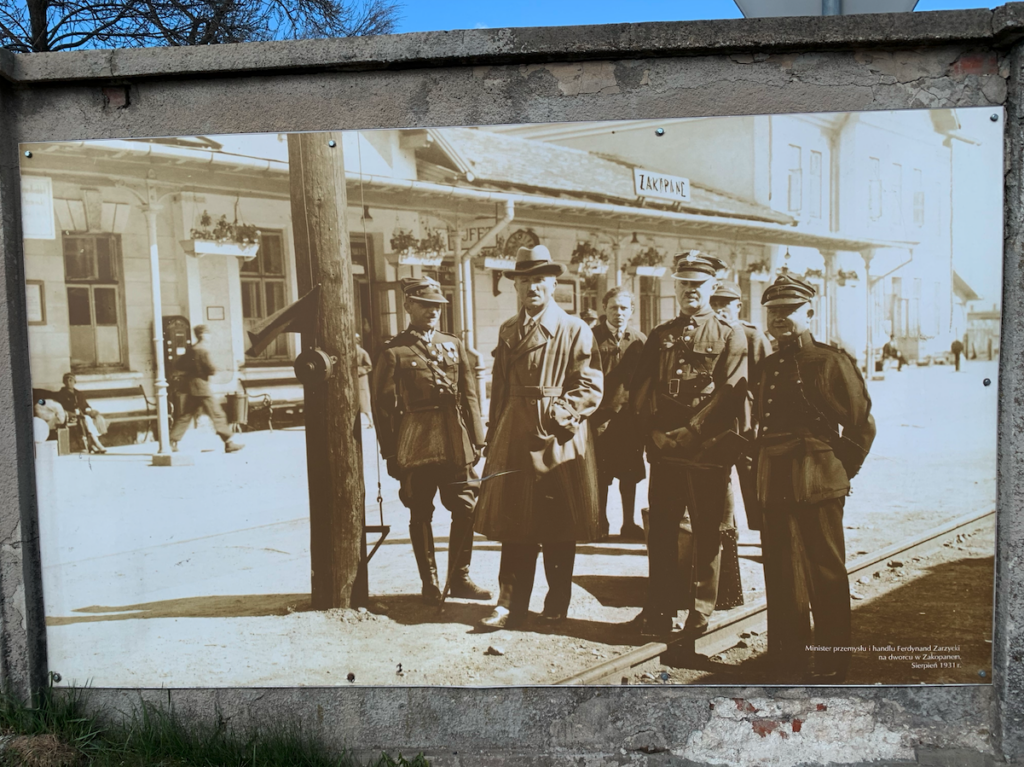
Electrification of line No. 99.
Route No. 99 was electrified (3 kV DC) on December 3, 1975. This was the period when it was planned to electrify all railway lines in Poland. However, the collapse of the Polish economy in the 1980s caused this process to be discontinued. The traction network is of the C120-2C type and is adapted to a maximum speed of up to 110 km/h. The current load capacity is 1,725 A. In the period 2017 – 2021, the traction network was replaced with a new one (new poles, power cables, traction cables). The route has an SHP system.
After the electrification of the route, the EN57 EZT (three-car, including one engine) and their reinforced version EN71 (four cars, including two engine) began to dominate here. Long-distance trains were usually pulled by EU07 / EP07 electric locomotives, which also performed well in tight track curves.
The maximum speed on route No. 99 is 80 km/h (2021). The route is mainly used by regional trains (Koleje Małopolskie, PolRegio) and long-distance trains (InterCity). Freight traffic is sporadic.
An important parameter of the route is also the maximum axle load of locomotives and wagons on the tracks. On route No. 99, this value is 177 – 196 kN. After the renovation of the route in the period 2018 – 2021, these values have the following data; Electric locomotives 221 kN, and wagons 196 kN. This is due to the specificity of mountain trails led along the slopes of hills. Some biographers suggest that this method of building the railway line affected the quality, which is not true. The Chabówka – Zakopane line, systematically renovated, does its job perfectly.
Zakopane railway station.
Over the course of over 120 years, the station in Zakopane was rebuilt three times. In the period 1937 – 1939, the Zakopane railway station was expanded. The designer was engineer Zenon Thienel. The last renovation was carried out in the period 2016 – 2021. The station buildings were thoroughly renovated, from the basements to the roofs.
The main station building was renovated, which was divided into a railway station and a bus station. The building has a completely new waiting room for passengers, luggage storage and ticket offices, as well as toilets in the basement rooms.
The railway clinic building was renovated. The layout of the rooms inside was slightly changed. A Tourist Information Center and a media library, exhibition rooms, and a club room were installed there. The media library is a facility where you can use a wide range of books, multimedia and internet access. A restaurant and a café will be opened. The renovation cost about PLN 40 million, including PLN 15 million from EU funds.
The new facility will be a multi-level car park located at the station platforms. The first stage was the cutting down of trees. The expected date of putting the car park into use is 2024. The parking lot will have 150 parking spaces and a grocery store. In connection with these works, in 2021, the wooden gate to the platforms with the neon inscription “PKP Zakopane” and the adjacent stands and shops were demolished. The famous neon and gate were created on the occasion of the World Championships in classic skiing, which took place in 1968. A new entrance gate is planned, to which the new neon “PKP Zakopane” will return. As for the “PKP Zakopane” neon itself, it stopped shining in the 90s. Residents collected donations and the neon was renovated in 2015.
The layout of the surrounding streets and the former bus station has been rebuilt. In the summer season of 2021, the station served up to 2,000 passengers per day. In 2021, the Kraków-Zakopane train covered the distance in 3.5 hours.
In March 2022, PKP once again suspended train services to the PKP Zakopane station. Funds were obtained for the renovation of platforms (extension for large trains), tracks and electric traction. The platform shelters will also be rebuilt. Therefore, the entire station area was fenced and renovation began. In order not to stop rail traffic at the Spyrkowka station (InterCity parking tracks), it was adapted to serve passenger trains. The distance between the stations is 1,500 m. Access by public transport to the temporary station has been planned. The temporary Spyrkówka station will operate until September 2023. All renovation works on line No. 99 are intended to shorten the travel time of passenger trains to 2.5 hours.
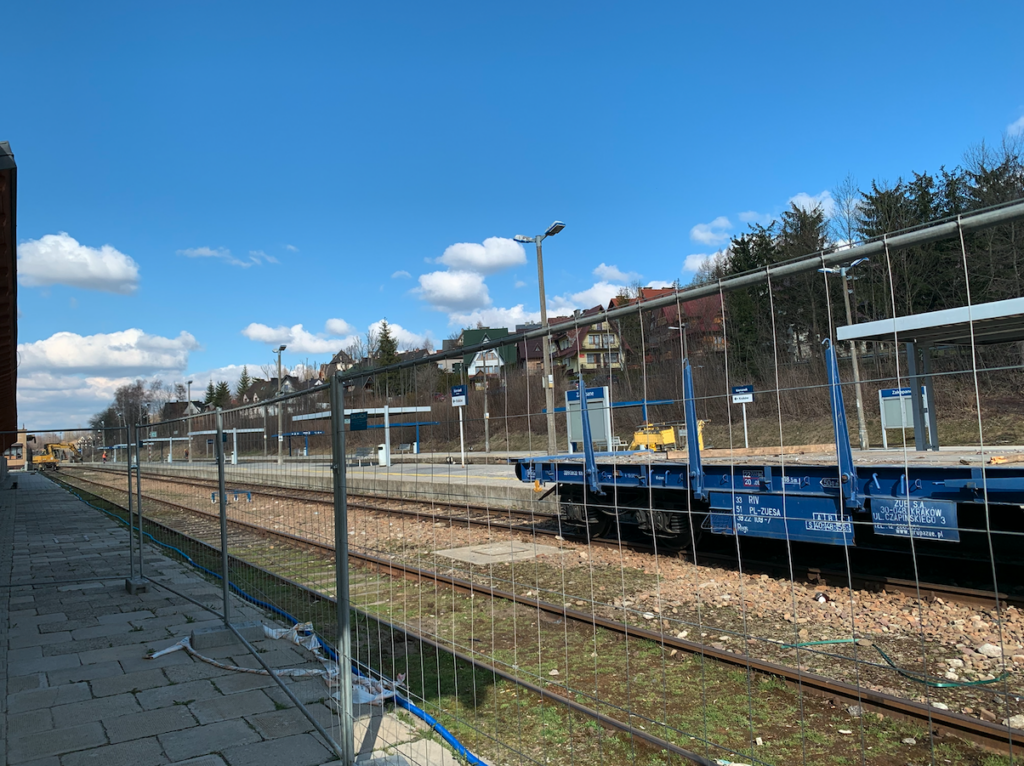
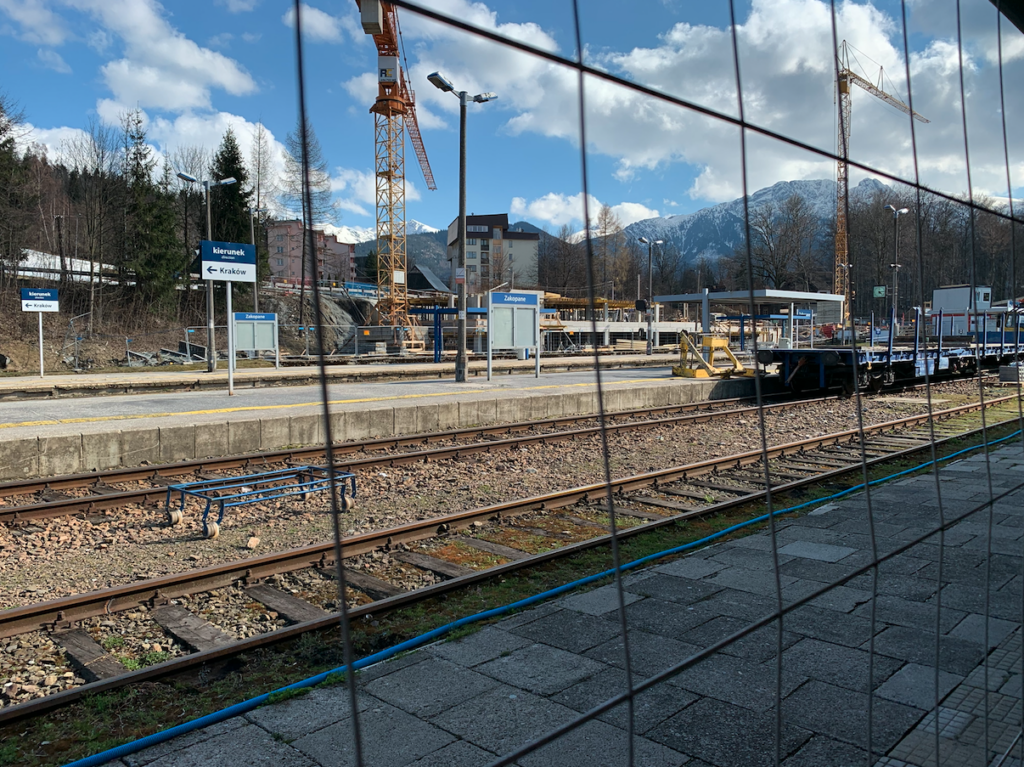
Address PKP Zakopane ul. Chramcówki 35, 34-500 Zakopane.
Written by Karol Placha Hetman
